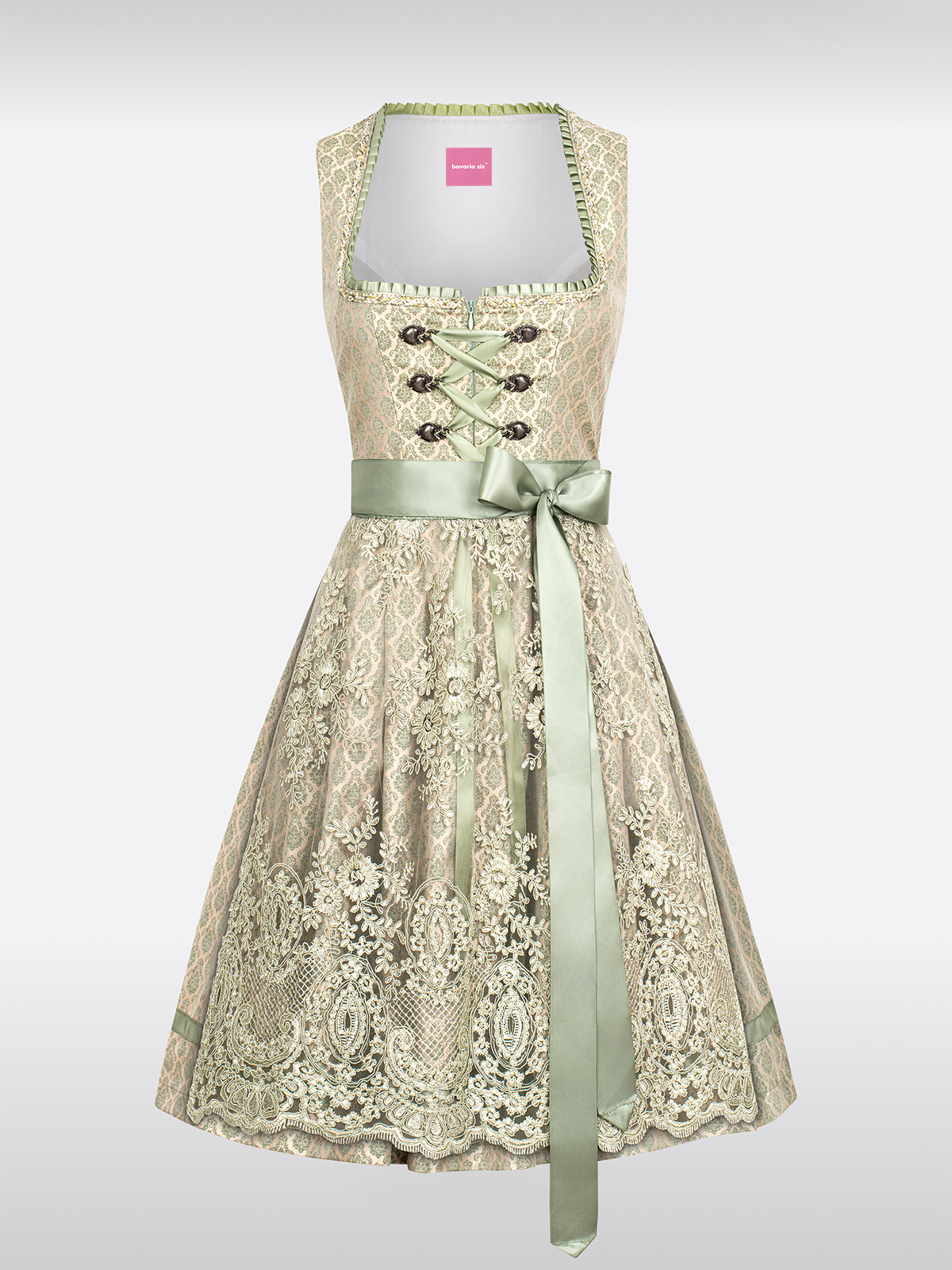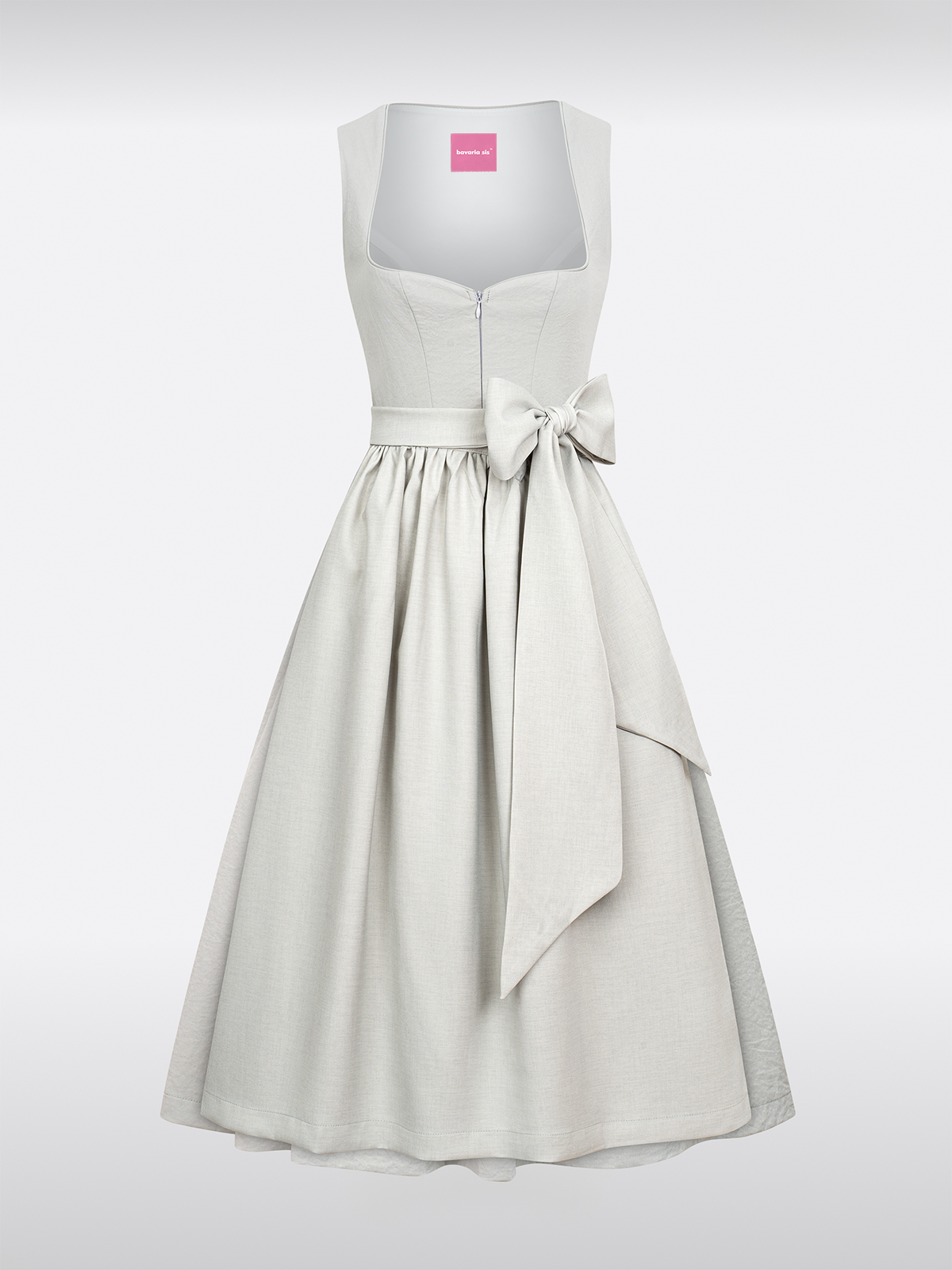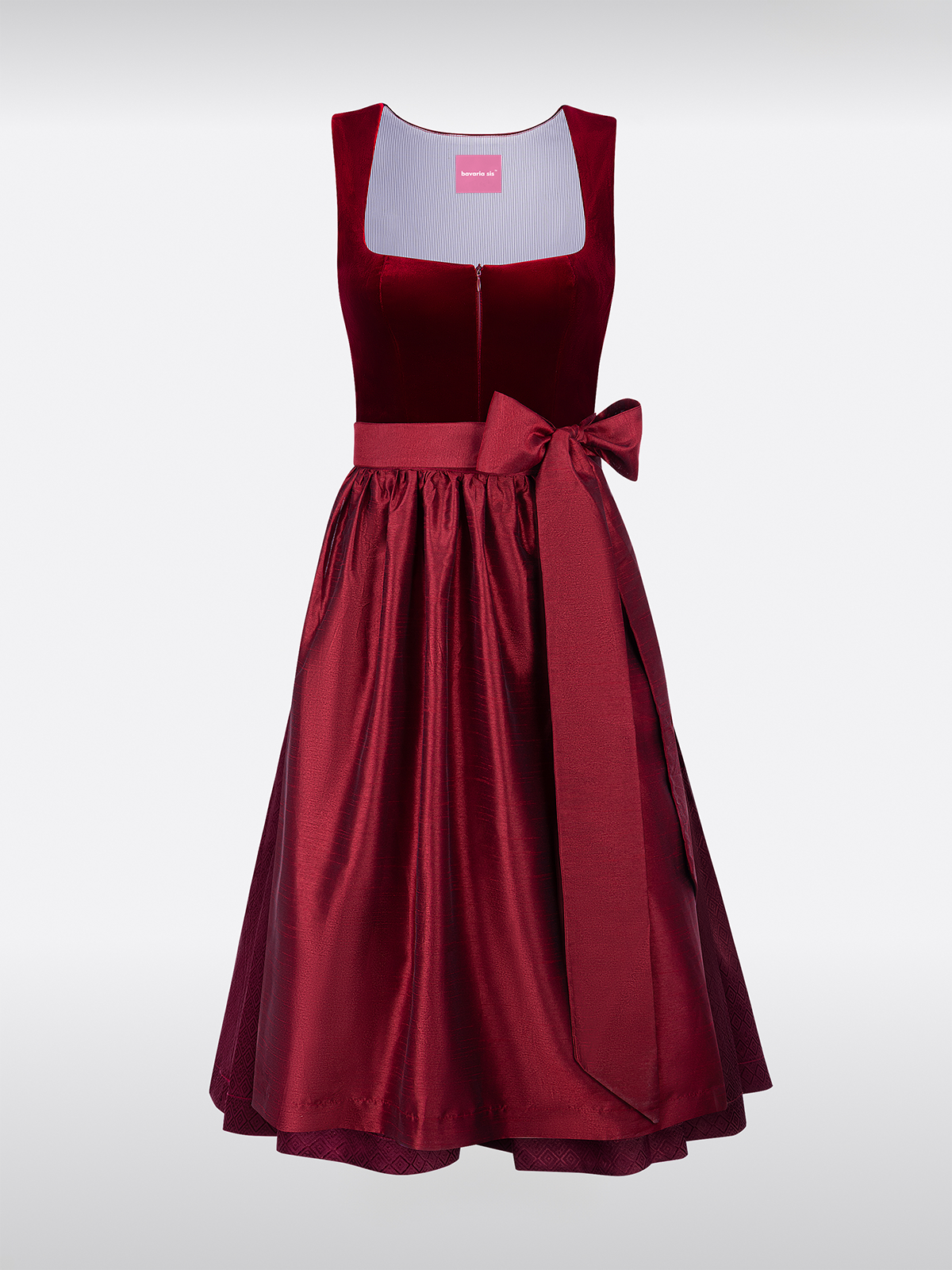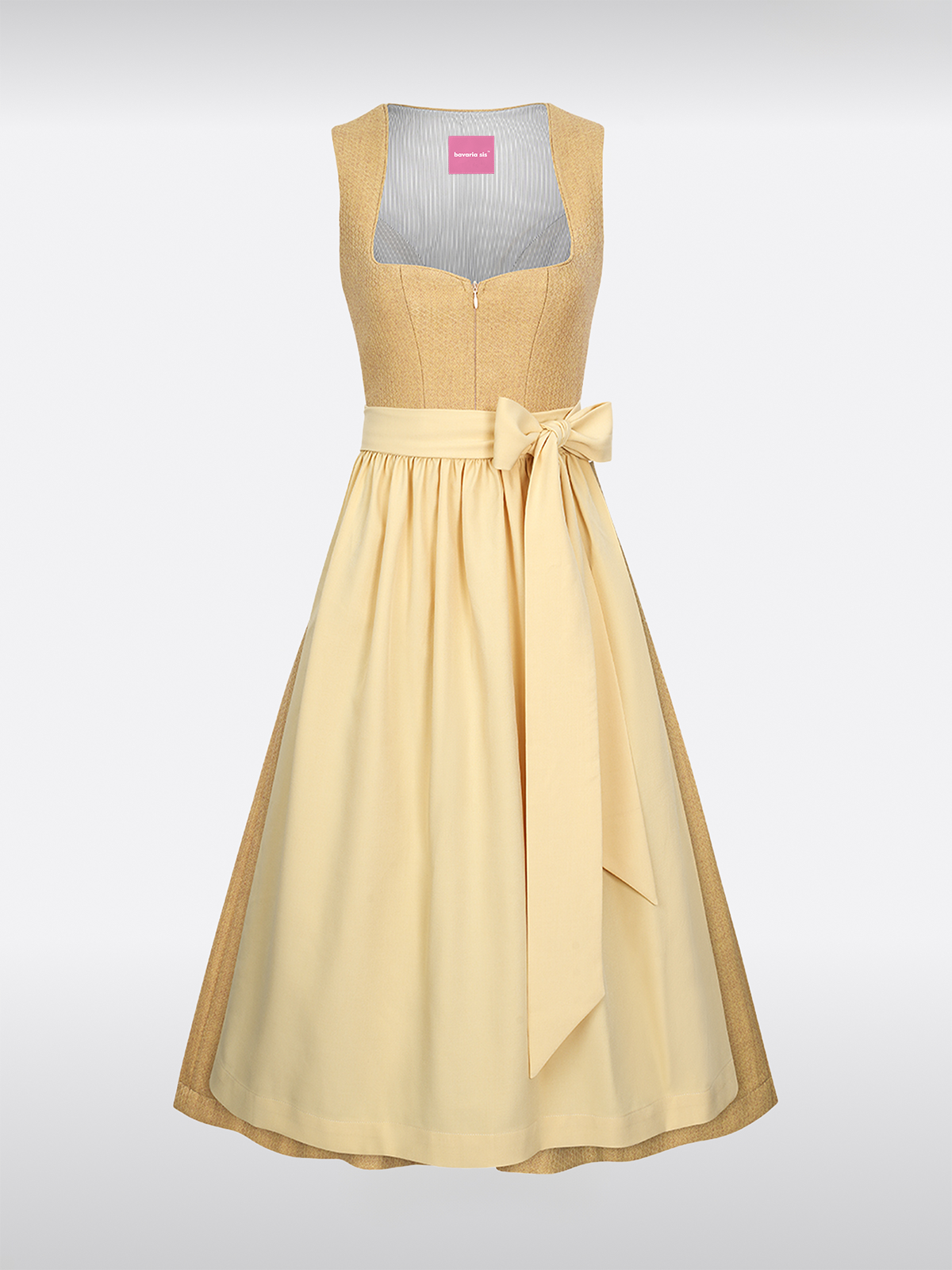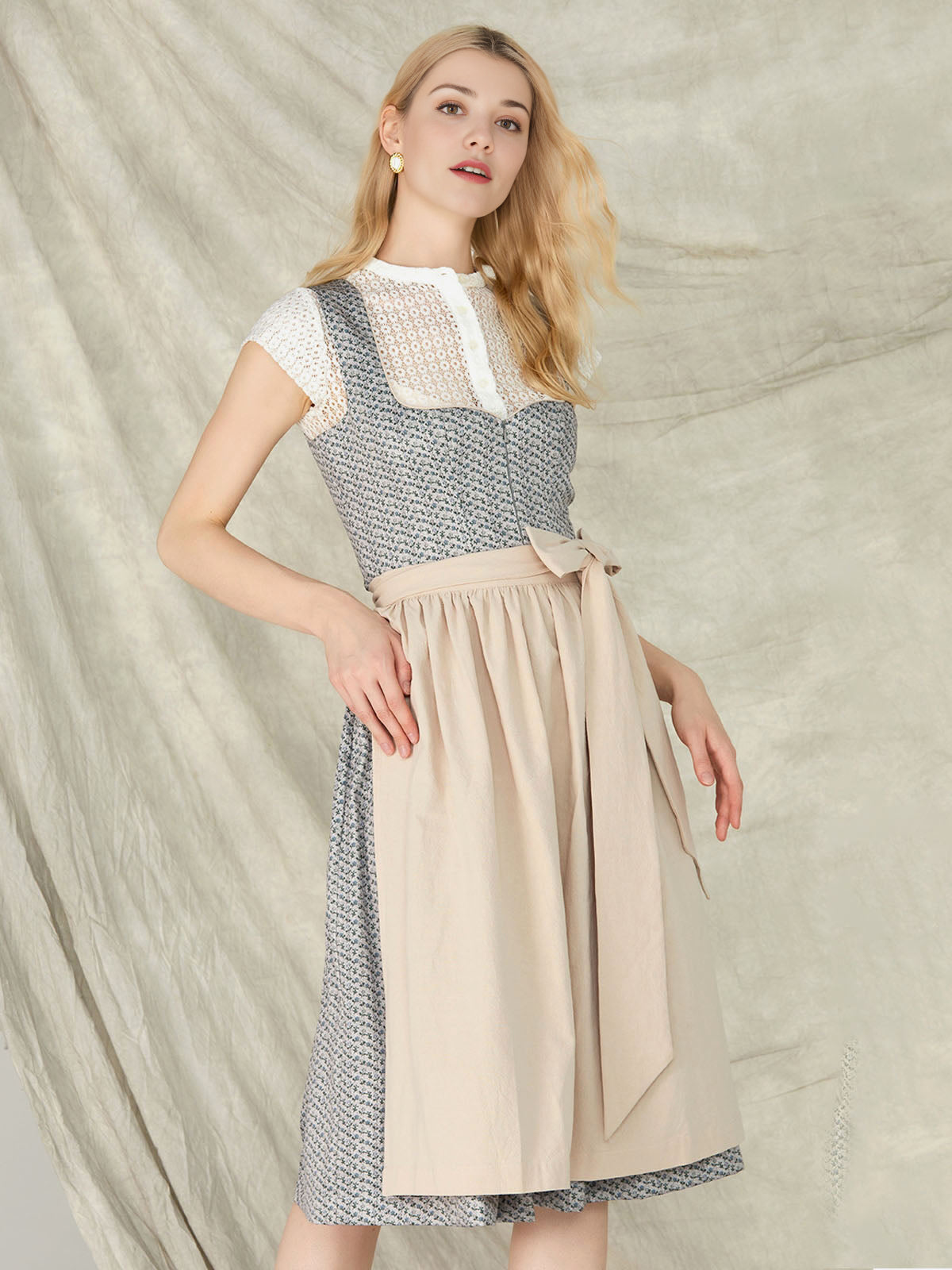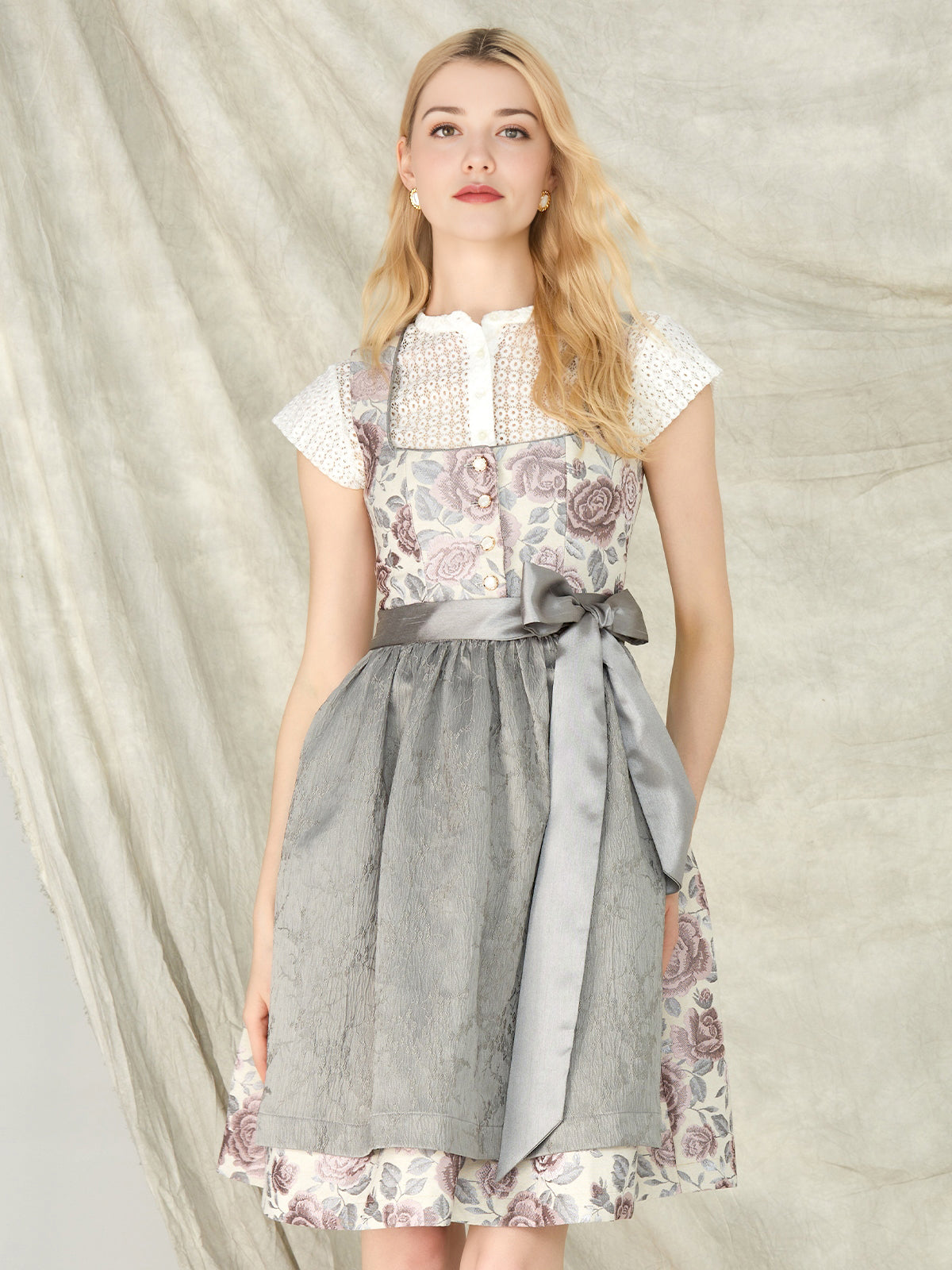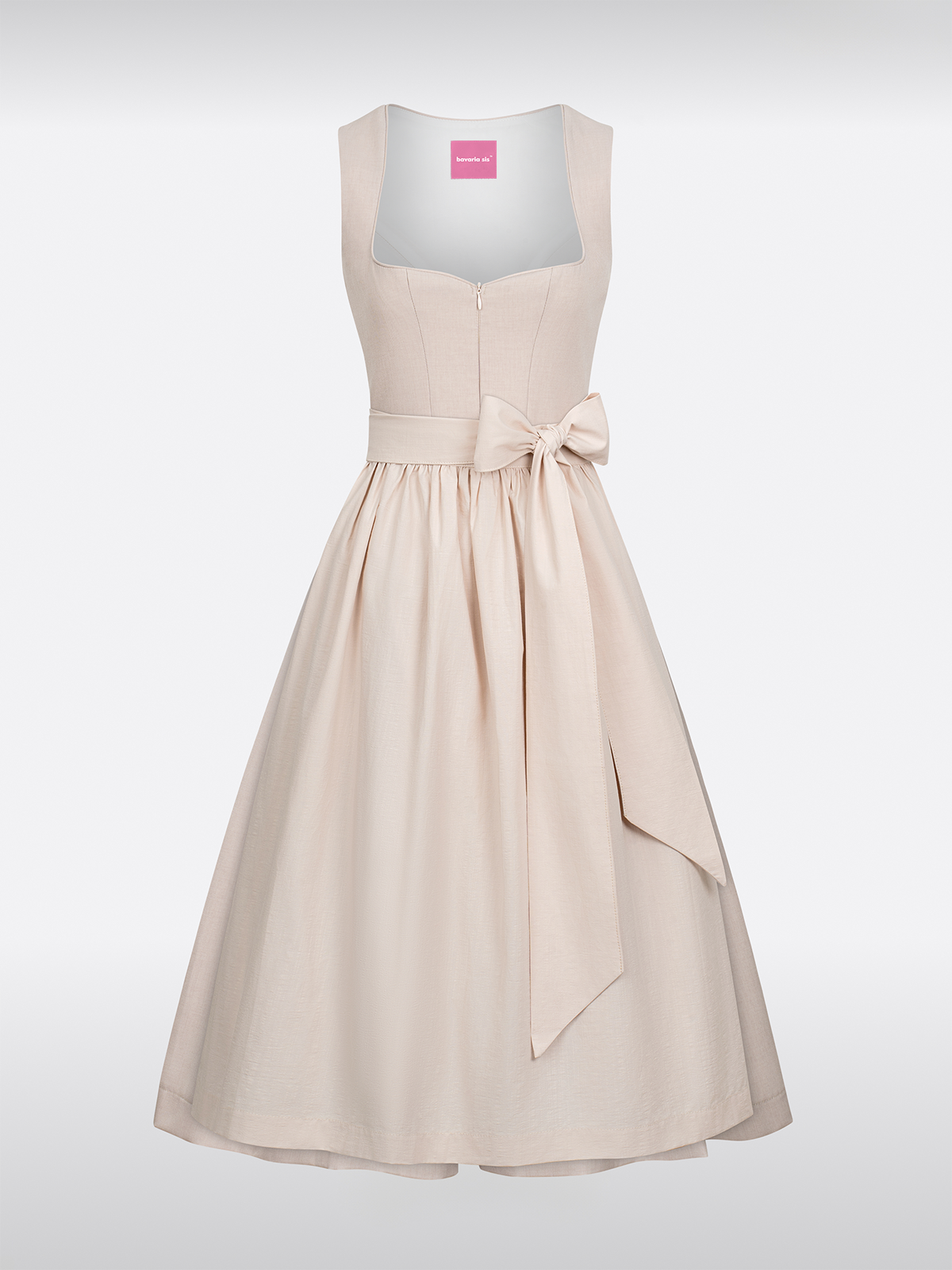1. The roots in the 14th century: The origin of Bavarian peasant clothing
In the heart of the 14th century, a practical clothing tradition developed in the Alpine regions of Bavaria, which formed the basis for today’s Dirndl The peasant women wore simple, dirt-repellent garments made of wool or linen, in earthy tones like gray and brown. These dirndl gray Coloring not only served as camouflage in everyday rural life, but also reflected the limited dye resources of the time.
The original form consisted of three layers:
- A wide linen underdress
- A close-fitting vest with lacing
- A padded apron that served as a practical accessory
This construction, today known as gray dirndl In its historical context, it symbolized the self-sufficient mentality of peasant society. Over time, the apron became a status symbol—the richer the fabric, the higher the social rank.
2. Aristocratic Transformation in the 19th Century: Prussian Influence on the Dirndl
In the 19th century, the Dirndl A radical change occurred when it evolved from rural workwear to the wardrobe of the Bavarian nobility. Under the influence of Prussian court art, fundamental design changes were made:
- Length and fit: The skirts were knee-length and made of fine fabric
- Decorative elements: embroidery, lace trim and silk bows enhanced the aristocratic character
- Colors: In addition to the classic dirndl gray pastel tones such as pale blue and ivory became popular
These changes, which dirndl trend 2025 were closely linked to the political situation. After the Prussian annexation of Bavaria in 1871, the dirndl became a national identity symbolizing German unity and cultural diversity.
3. Post-war boom: Tourism as a catalyst for commercialization
After World War II, the dirndl experienced a renaissance, closely linked to the growing tourism industry. The annual Wiesn (Munich Oktoberfest) became a global event, with the gray dirndl became an indispensable costume.
Key factors of commercialization:
- Mass production: Cheap polyester variants replaced hand-woven fabrics
- Accessories industry: Jewelry, bags and shoes became a multi-million dollar market
- Global marketing: Celebrities like Heidi Klum positioned the dirndl as an “Alpine glamour statement”
Today, the dirndl trend 2025 Annual sales of over 300 million euros – proof of its economic importance.
4. Modern Interpretations: Punk, Boho and the Future of the Dirndl
The design language of the 21st century has transformed the classic dirndl gray expanded to include radical elements:
- Fusion with subcultures: Studded chain aprons, leather trim and tartan patterns give the traditional dress a punk touch
- Bohemian chic: Flowing silk skirts, floral appliqués and asymmetric cuts appeal to a young, urban audience
- Sustainability: Organic cotton dirndls and upcycling concepts position themselves as ecological alternatives
The dirndl trend 2025 shows clearly: the garment has left its provincial past behind and has become a global fashion phenomenon that combines tradition and innovation.
5.Journey through time at the Deutsches Museum: Exhibits as witnesses to history
The Munich German Museum preserves important pieces of the Dirndl evolution:
- Original from the 18th century: A peasant example made of wool with a hand-embroidered pattern
- Noble model from 1890: Silk dirndl with gold thread decorations
- Postmodern creation of 2020: A neon-colored design with 3D-printed elements
This exhibition illustrates how the gray dirndl from practical workwear to a cultural symbol with global relevance.
Conclusion: From the village to the world stage
The dirndl is more than just a piece of clothing – it is a living archive of German history and creativity. Whether as a classic dirndl gray or in the avant-garde dirndl trend 2025 Design: This traditional costume connects generations, cultures, and styles. Especially in times of fast-paced fashion consumption, it reminds us that true style identity grows from authenticity and innovation.

